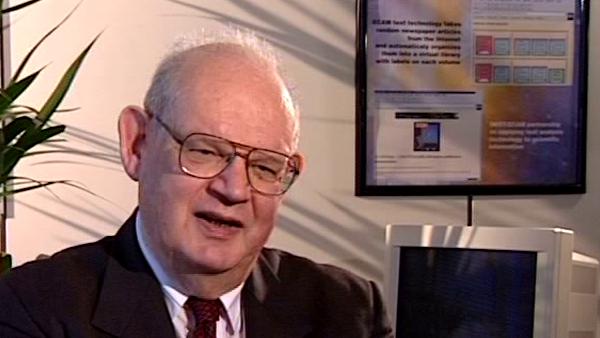NEXT STORY

My approach to finance
RELATED STORIES

NEXT STORY

My approach to finance
RELATED STORIES


|
Views | Duration | |
|---|---|---|---|
| 121. First price change distribution model | 116 | 01:53 | |
| 122. Value at risk | 166 | 01:46 | |
| 123. Reaction to work in price change | 112 | 04:36 | |
| 124. Boom and bust; October 19th 1987 | 130 | 03:42 | |
| 125. Interaction between work in physics and economics | 123 | 03:35 | |
| 126. My approach to finance | 104 | 03:43 | |
| 127. Inequality and finance; differences between Bachelier and... | 158 | 06:11 | |
| 128. The importance of the eye | 133 | 02:46 | |
| 129. Cartoons and forgeries | 104 | 05:05 | |
| 130. Interactive procedure; the Deutschmark-Dollar exchange | 82 | 04:38 |


Benoît Mandelbrot (1924-2010) discovered his ability to think about mathematics in images while working with the French Resistance during the Second World War, and is famous for his work on fractal geometry - the maths of the shapes found in nature.
Title: Interaction between work in physics and economics
Listeners: Bernard Sapoval Daniel Zajdenweber
Bernard Sapoval is Research Director at C.N.R.S. Since 1983 his work has focused on the physics of fractals and irregular systems and structures and properties in general. The main themes are the fractal structure of diffusion fronts, the concept of percolation in a gradient, random walks in a probability gradient as a method to calculate the threshold of percolation in two dimensions, the concept of intercalation and invasion noise, observed, for example, in the absorbance of a liquid in a porous substance, prediction of the fractal dimension of certain corrosion figures, the possibility of increasing sharpness in fuzzy images by a numerical analysis using the concept of percolation in a gradient, calculation of the way a fractal model will respond to external stimulus and the correspondence between the electrochemical response of an irregular electrode and the absorbance of a membrane of the same geometry.
Daniel Zajdenweber is a Professor at the College of Economics, University of Paris.
Duration: 3 minutes, 36 seconds
Date story recorded: May 1998
Date story went live: 29 September 2010